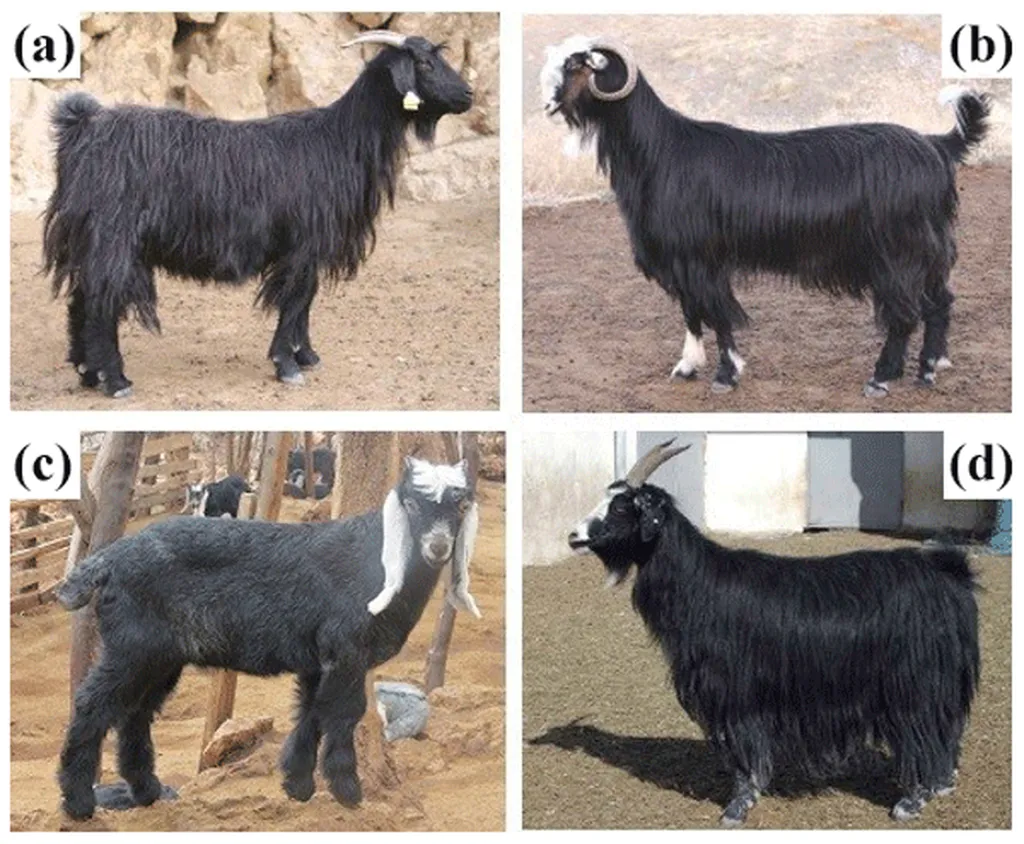In the heart of the Fertile Crescent, where agriculture first took root, a team of researchers led by İ. Karaköse from the Graduate School of Natural and Applied Sciences at Aydin Adnan Menderes University in Türkiye has uncovered fascinating insights into the genetic diversity of goat breeds. Their study, published in the Archives of Animal Breeding (Archiv für Tierzucht), sheds light on the maternal origins and phylogenetic relationships of four prominent goat breeds: Damascus, Kilis, Hatay, and Kil.
The research, part of the “National Breeding Project under Farm Conditions” initiated by the Republic of Türkiye’s Ministry of Agriculture and Forestry, analyzed the mitochondrial DNA (mtDNA) D-loop sequences of 84 goats. This region of the genome is particularly useful for tracing maternal lineages due to its high variability. The team focused on a 598 base pair segment of the hypervariable region 1 (HV1) within the mtDNA displacement loop.
The findings revealed a rich tapestry of genetic diversity. Haplotype diversity, a measure of the number of different genetic variants within a population, ranged from 0.944 to 0.989, while nucleotide diversity, which indicates the average number of differences between any two DNA sequences, varied between 0.01734 and 0.02635. “These values underscore the significant genetic variability within these breeds,” Karaköse noted.
However, the Hatay goats stood out with relatively lower diversity, suggesting a potential genetic bottleneck or prolonged isolation. “This could be due to historical breeding practices or geographical isolation,” Karaköse explained. “It highlights the need for conservation strategies to preserve the genetic diversity within this population.”
The study also identified 51 unique haplotypes, with the majority belonging to Haplogroup A, which is prevalent in goat populations worldwide. Notably, the Hatay goats were found to belong to both Haplogroup A and Haplogroup G, a first for this breed. Additionally, Haplogroup G was identified in Damascus goats for the first time.
The phylogenetic analysis supported the distinct emergence of Kilis and Hatay goats, enhancing our understanding of caprine genetic diversity. “This research is crucial for the agricultural sector, particularly for breeders and conservationists,” Karaköse said. “It provides a genetic roadmap that can guide breeding programs aimed at maintaining and enhancing genetic diversity.”
The commercial implications are significant. Understanding the genetic makeup of these breeds can lead to improved breeding strategies, enhancing traits such as disease resistance, productivity, and adaptability to different environments. This, in turn, can boost the agricultural sector’s resilience and profitability.
Moreover, the study underscores the importance of conserving these genetic resources. As Karaköse pointed out, “Preserving genetic diversity is not just about maintaining the past; it’s about securing the future of agriculture.” This research could shape future developments in livestock genetics, paving the way for more sustainable and productive farming practices.
In the broader context, the study contributes to the global understanding of livestock genetic diversity, particularly in regions like the Fertile Crescent, which is a cradle of agricultural innovation. As we face the challenges of climate change and food security, such insights become increasingly valuable.
The research published in the Archives of Animal Breeding (known in English as “Archives of Animal Breeding”) not only advances our scientific knowledge but also offers practical benefits for the agricultural sector. It serves as a reminder of the intricate web of life and the importance of preserving its diversity for future generations.

